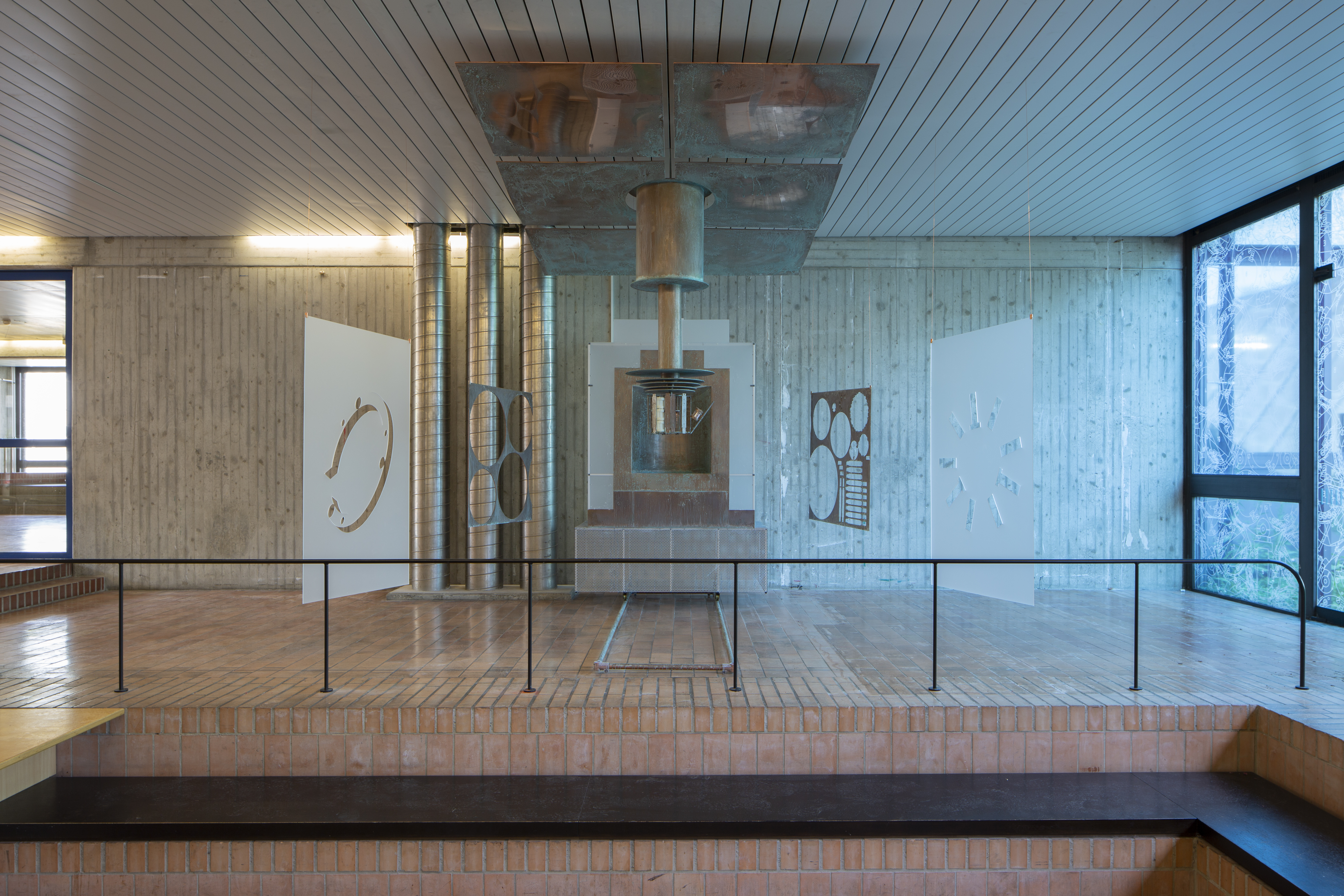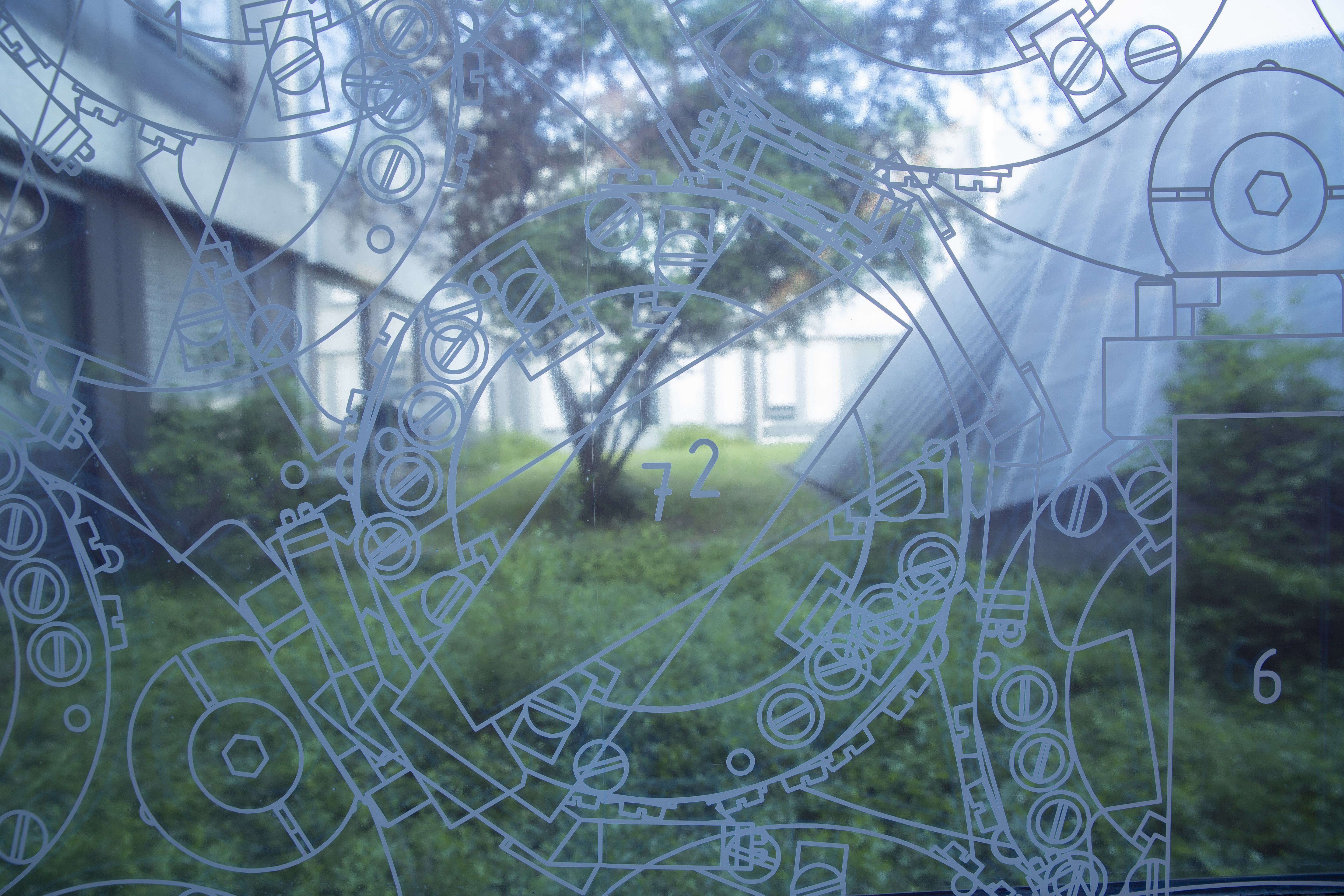
The installation and sculpture “a shot in the dark nights of absence” is inspired by the CRESST (Cryogenic Rare Event Search with Superconducting Thermometers) experiment, a project located at the Gran Sasso National Laboratory in Italy. It seeks to detect the possible yet still undetected existence of so-called ‘Dark Matter’ in space. The sculpture reproduces at a 1:1 scale the original detector made of copper, focusing on its mystical body as the physical materialisation of scientific speculation. The video piece accompanying the project aims to to reflect on degrees of performativity in scientific research – apprehending these gestures as ritualistic acts and address the quest for ‘Dark Matter’ in its intertwinement with imagination and faith.






copper, acrylic glass, galvanized steel, original CRESST detector, video (colour and sound, 14 min), exhibition view at TUM Physics Department





Anyway, she was telling me about the absence.
There is roughly 5 times more dark matter than ordinary matter.
The small part of what is visible,
of the ones that count,
of the ones who can live as they want.
Besides the much bigger part
of the ones who sleep dreamless nights,
the ones who stay unknown.
I only know these 5%,
those who have time to wonder if there is something else,
those who have the means to pursue their visions.
But for the majority of mankind,
there are enough troubles in front of them, visible and evident,
enough structures to be unpacked and problems to be solved.
I wondered if the mountain interacted with dark matter,
before we drilled the hole.

With the support of:
SFB1258 Collaborative Research Center: Neutrinos and Dark Matter in Astro- and Particle Physics
Technische Universität München (Elizabeth Mondragón, Petra Riedel, Elisa Resconi, Stefan Schönert, Dominik Rechten and Harry Hess)
Max-Planck-Institut für Physik (António Bento, Federica Petricca, Lucia Canonica)
Serralves Museum
Production assistance: João Pedro Costa and André Alexandre
Voice over of the film: Shirin Zeraaty
Exhibition architecture: Diogo Passarinho Studio (Gonçalo Reynolds and Diogo Passarinho)
Build up team: Harry Hess, Georg Lerchl and Lukas Hein
Graphic design: John Haag
photos by Constanza Meléndez
2019-23
